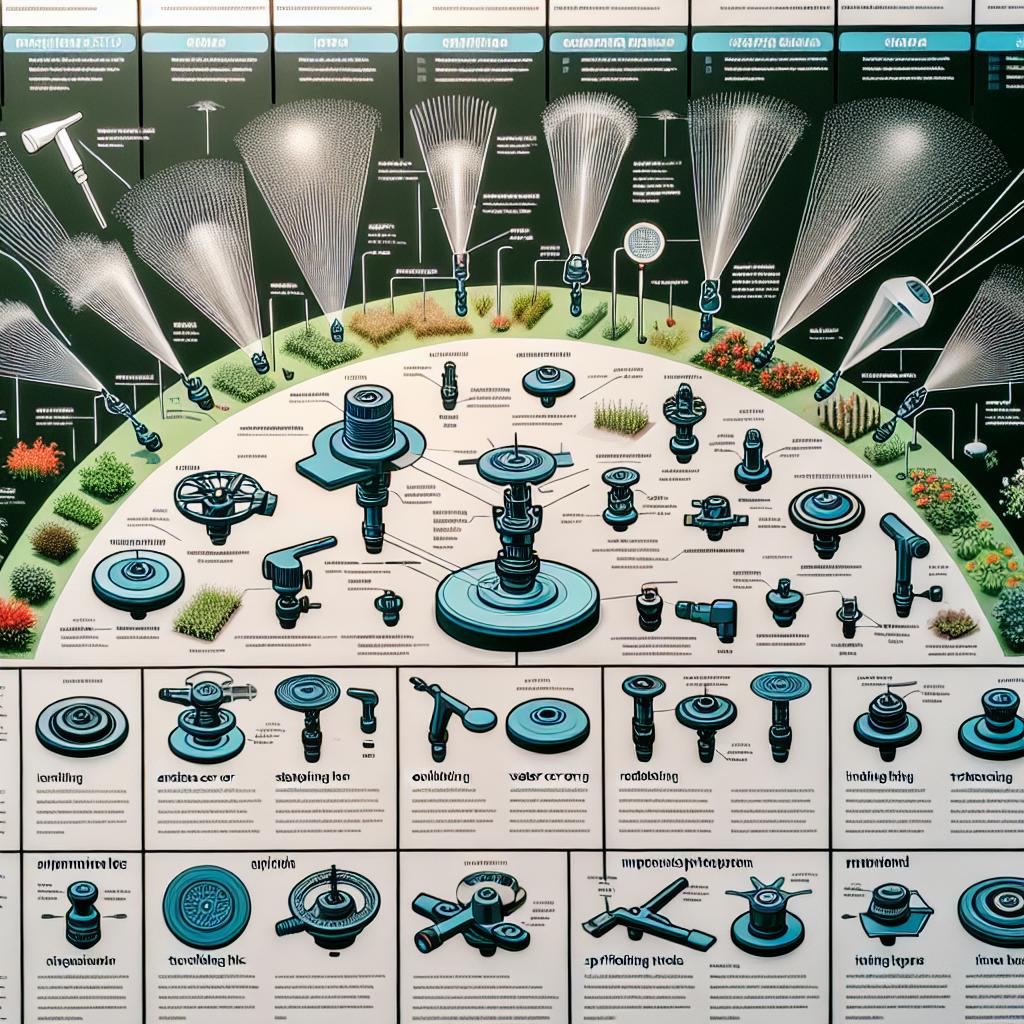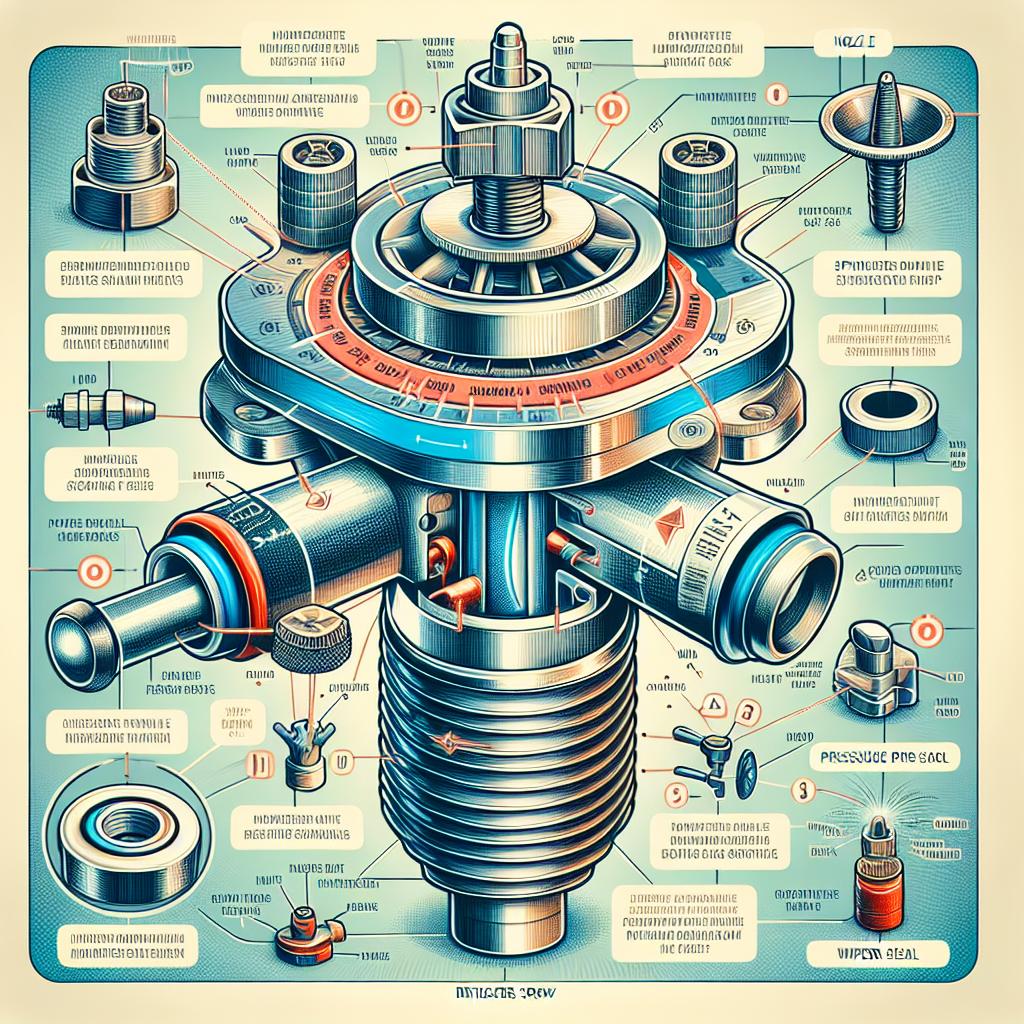This post may contain affiliate links which means I may receive a commission for purchases made through links. Learn more on my Private Policy page.
Choosing the Right Sprinkler Heads for Irrigating Large Fields
When it comes to nurturing large fields, the secret to flourishing crops and vibrant landscapes often lies beneath the surface—quite literally! Imagine a sun-drenched expanse of greenery, where every plant receives just the right amount of water to thrive, thanks to a well-chosen irrigation system. But in a world teeming with options, how do you navigate the myriad of sprinkler heads available to find the perfect fit for your sprawling fields? Fear not! In this article, we will embark on a friendly exploration of the ins and outs of selecting the right sprinkler heads. Whether you’re a seasoned farmer, a dedicated gardener, or a curious new landowner, we’ll help you demystify the process. Together, we’ll unveil the key factors to consider, from water efficiency to coverage area, ensuring your verdant paradise flourishes under the watchful spray of our unsung irrigation heroes. So, roll up your sleeves and let’s dive into the world of sprinklers and discover how to keep your fields lush and thriving!
Exploring the Variety: Types of Sprinkler Heads and Their Unique Advantages
Understanding the various types of sprinkler heads is crucial for optimizing irrigation in large fields. Each type offers unique benefits tailored to specific needs, ensuring maximum efficiency and water conservation. Among the most common types, you’ll find:
- Fixed Spray Heads: Ideal for small to medium-sized areas, these heads deliver a directed spray pattern and are best for flower beds or lawns.
- Gear-Driven Rotors: Perfect for larger expanses, they rotate in a wide arc, providing even coverage over expansive turf without wasting water.
- Impact Sprinklers: Known for their durability and coverage, these dynamic heads are effective for agricultural fields, capable of handling higher pressures while still delivering a consistent water flow.
- Drip Irrigation Emitters: Efficient for garden beds, they provide water directly to the root zone, minimizing evaporation and runoff.
When selecting a sprinkler head, consider factors such as the size of the area, water pressure, and soil type. Different heads serve specific purposes, and choosing the right one can maximize water efficiency and crop yield. Here’s a quick comparison that highlights the advantages of some popular options:
| Sprinkler Type | Best For | Key Advantages |
|---|---|---|
| Fixed Spray Heads | Small gardens | Targeted delivery |
| Gear-Driven Rotors | Large lawns | Even distribution |
| Impact Sprinklers | Agricultural fields | High durability |
| Drip Emitters | Flower beds | Water conservation |

Finding the Perfect Fit: Assessing Your Field’s Size and Shape
When it comes to selecting the right sprinkler heads for extensive agricultural fields, understanding the size and shape of your land is crucial. Assess the overall dimensions first. A rectangular layout may benefit from rotating sprinklers that focus coverage in aligned rows, maximizing efficiency. On the other hand, circular fields can leverage gear-driven rotors that distribute water symmetrically, ensuring every inch gets its due share. Additionally, consider any notable land features like hills or dips, as these can significantly influence water distribution patterns and impact your irrigation strategy.
To guide your selection process, take note of the following elements that affect your irrigation setup:
- Field Dimensions: Measure length and width accurately for better planning.
- Soil Type: Different soils absorb water at varying rates; sandy soils may require lighter applications than clay.
- Water Source: Evaluate if your supply can handle the demand for larger fields.
- Climate Conditions: Assess average rainfall and evaporation rates; these factors will dictate irrigation frequency.
| Field Type | Recommended Sprinkler Type |
|---|---|
| Rectangular | Rotating Sprinklers |
| Circular | Gear-Driven Rotors |
| Irregular | Impact Sprinklers |

Maximizing Efficiency: Key Features to Look for in Sprinkler Heads
When selecting sprinkler heads for your large fields, consider features that enhance functionality and adaptability to your unique landscape. Adjustability is crucial; look for models with customizable radius and arc settings, allowing you to tailor the water coverage based on your specific crop layout. Additionally, opting for pressure regulation in your sprinkler heads helps maintain consistent water distribution, minimizing waste and ensuring that every plant receives the necessary hydration. Another valuable feature is durability; choose materials that can withstand harsh weather conditions and resist corrosion, making them a long-term investment.
Furthermore, it’s essential to evaluate the spray pattern options available. A wide array of spray types—like mist, full circle, and part circle—can significantly impact irrigation efficiency by catering to different growing conditions. Look for models equipped with smart technology, which can adjust watering schedules based on real-time weather data or soil moisture levels. This feature not only conserves water but also promotes healthier crop growth. consider the ease of maintenance; heads that can be easily cleaned and serviced minimize downtime and maximize productivity on your land.

Making the Investment Count: Tips for Budgeting and Long-Term Care
Investing in the right sprinkler heads for large fields requires a thoughtful approach to budgeting that ensures both immediate functionality and long-term sustainability. Here are some key considerations to keep in mind:
- Assess the Field Size: Determine the dimensions of the area to be irrigated, as this will influence the type and number of sprinkler heads needed.
- Evaluate Water Pressure: Understanding existing water pressure will help in choosing heads that work efficiently without wasting water.
- Plan for Future Expansion: Consider how your irrigation needs may grow over time, and budget for additional heads if expansion is anticipated.
- Prioritize Quality: Investing in durable and efficient sprinkler heads might lead to higher upfront costs, but the long-term savings in maintenance and water usage make it worthwhile.
To ensure the longevity of your investment, regular monitoring and maintenance of your irrigation system is essential. By implementing a proactive maintenance plan, you can avoid costly repairs and extend the lifespan of your equipment. Key maintenance strategies include:
| Maintenance Task | Frequency | Notes |
|---|---|---|
| Check for Clogs | Monthly | Inspect sprinkler heads and filters to ensure optimal water flow. |
| Inspect for Leaks | Quarterly | Look for signs of leakage and repair immediately to prevent water loss. |
| Adjust Sprinkler Coverage | Seasonally | Make sure coverage is even and adjust as needed for plant growth. |
Final Thoughts
As we wrap up our journey through the world of sprinkler heads for irrigating large fields, remember that every drop counts! Choosing the right sprinkler head is not just about efficiency; it’s about nurturing the land, supporting the growth of lush crops, and ultimately, reaping the rewards of your hard work. With a wealth of options at your fingertips, take the time to assess your field’s unique needs—whether it’s the type of crops you’re growing, the layout of your land, or even the prevailing winds.
So, grab your notebook, head out into the field, and visualize the perfect irrigation setup. By investing in the right sprinkler heads, you’re not just outfitting your land; you’re cultivating a legacy of sustainability and growth. Happy irrigating! Here’s to flourishing fields and bountiful harvests, one sprinkle at a time! 🌱✨
This post may contain affiliate links which means I may receive a commission for purchases made through links. Learn more on my Private Policy page.

